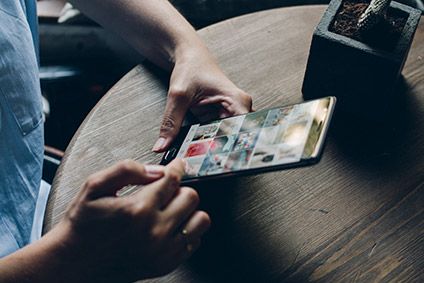
Brand owners should look to micro-influencers in the social media realm in order to drive consumer awareness, the president of consumer trends specialist TrendHunter has recommended.
Speaking at the TrendHunter Future Festival in Toronto this week, Shelby Walsh said the trend towards smaller-scale influencers is being driven by a consumer desire for more personal connections. She also highlighted the cost benefits in using micro-influencers.

Discover B2B Marketing That Performs
Combine business intelligence and editorial excellence to reach engaged professionals across 36 leading media platforms.
“It’s never been as easy as it is today to be an influencer,” said Walsh. “Influence itself is becoming a lot more niche. We call these micro-influencers – people with followings of between 10,000 and 100,000. The term micro-influencer didn’t really exist four years ago, but just last year it has grown by ten times. This is a big movement; personal identity is now something that is completely brand-able.”
According to Statista, the global Instagram influencer market value is projected to reach $2.38bn in 2019.
Walsh noted specialist agencies are helping micro-influencers to make money from branded partnerships. She also highlighted the fact that micro-influencers don’t have to be human. ‘Oatmeal’ the hedgehog, for example, has 72,000 followers on social media and has enjoyed big brand partnerships, with the likes of Happy Socks, a Swedish socks and underwear producer.
The TrendHunter president flagged several key benefits to using micro-influencers. “First – a more personal connection,” she said. “It falls somewhere between the aspiration you have for a celebrity and the trust you have for friends and family.”

US Tariffs are shifting - will you react or anticipate?
Don’t let policy changes catch you off guard. Stay proactive with real-time data and expert analysis.
By GlobalDataWalsh also outlined ‘heightened engagement’. “If I comment on a celebrity’s post,” she said, “it’s very unlikely that they’re going to message me directly back. That’s not true with a micro-influencer. That’s why we see 60% higher campaign engagement rates.”
Micro-influencers are also more focused on a brand’s mission, according to Walsh. “70% of them work on less than five marketing campaigns a year – that means they are being under-utilised by brands.”
Walsh also pointed out micro-influencers are more cost-efficient than larger-scale influencers: some celebrities are asking for as much as US$500,000 for one Instagram post.
“It may be shocking to you that 99% of micro-influencers charge $1,000 or less,” she said.
Several companies have already started to target micro-influencers. Walsh outlined a campaign from Adidas featuring billboards in New York and Los Angeles that address specific micro-influencers in those areas. “This campaign wasn’t just successful because it made a few people’s days,” she said. “These people shared their whole experience online with their followers – people who know them intimately, like they are their friends, got to experience it virtually with them.
“A lot of brands are going to think a lot more strategically about how to leverage and utilise … these influencers,” Walsh added.





